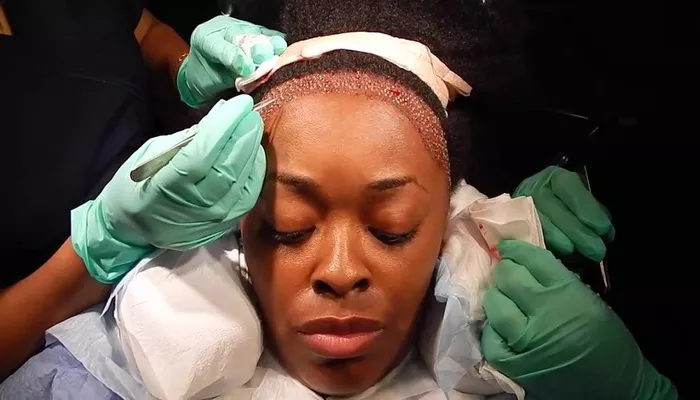Traction alopecia is a form of hair loss caused by prolonged tension on the hair follicles, often due to hairstyles that pull tightly on the hair. This condition can lead to permanent hair loss if not treated promptly. One of the most effective treatments for traction alopecia is a hair transplant. However, the cost of a hair transplant can vary significantly based on several factors. This article will provide a comprehensive overview of the costs associated with hair transplants for traction alopecia, including factors that influence pricing, typical costs, and potential additional expenses.
Understanding Traction Alopecia
Traction alopecia occurs when hair is subjected to constant pulling or tension. Common causes include tight hairstyles like braids, ponytails, or buns. Over time, this constant strain can damage the hair follicles, leading to thinning or loss of hair in the affected areas. Early intervention is crucial to prevent permanent damage.
What Is a Hair Transplant?
A hair transplant is a surgical procedure where hair follicles are moved from one part of the body (donor site) to another (recipient site) where hair loss has occurred. There are two main techniques used for hair transplants:
Follicular Unit Extraction (FUE): Individual hair follicles are extracted from the donor site and transplanted to the recipient site.
Follicular Unit Transplantation (FUT): A strip of scalp with hair follicles is removed from the donor site, and the follicles are then dissected and transplanted.
SEE ALSO: Does Sweating Affect Hair Transplant?
Factors Affecting the Cost of a Hair Transplant
Several factors can influence the cost of a hair transplant for traction alopecia:
Extent of Hair Loss: The more extensive the hair loss, the more follicles need to be transplanted, which increases the cost.
Clinic Location: Costs can vary based on geographic location. Clinics in metropolitan areas or high-cost regions may charge more.
Surgeon’s Expertise: Experienced and renowned surgeons often charge higher fees for their services.
Technique Used: FUE and FUT have different cost structures. FUE is typically more expensive due to the time and precision required.
Number of Grafts: The cost is often calculated per graft. The number of grafts required depends on the severity of the hair loss.
Additional Services: Pre-operative consultations, post-operative care, and follow-up visits may incur additional costs.
Clinic’s Reputation: Well-established clinics with a strong reputation may charge more for their services.
Typical Costs of Hair Transplants
The cost of a hair transplant for traction alopecia can range significantly. On average, you might expect to pay between $4,000 and $15,000. Here is a breakdown of typical costs based on different factors:
Per Graft Cost:
Hair transplant clinics often charge per graft. The cost per graft can range from $3 to $10. The total cost will depend on the number of grafts required. For instance, if 2,000 grafts are needed and the cost per graft is $5, the total would be $10,000.
FUE vs. FUT:
FUE is generally more expensive than FUT. FUE can cost between $6,000 and $15,000, while FUT might range from $4,000 to $10,000.
Geographic Variations:
In the United States, costs can vary significantly by region. Cities like New York and Los Angeles may have higher prices compared to smaller towns or regions with a lower cost of living.
Surgeon’s Fees:
Highly experienced surgeons or those with a strong reputation may charge a premium. This could add an additional $1,000 to $5,000 to the overall cost.
Additional Costs to Consider
In addition to the basic cost of the hair transplant procedure, there are several additional expenses that may arise:
Consultation Fees: Initial consultations may be charged separately, typically ranging from $100 to $500.
Medications: Post-operative medications, such as painkillers or antibiotics, are often prescribed and can add to the overall cost.
Travel and Accommodation: If the clinic is located far from your home, you may need to budget for travel and accommodation expenses.
Follow-Up Visits: Some clinics include follow-up visits in the initial cost, while others may charge extra for these services.
Financing Options
Given the potentially high cost of hair transplants, many individuals explore financing options. Some clinics offer financing plans that allow patients to pay for their procedure in installments. Additionally, medical credit cards or personal loans may be viable options for covering the cost of the transplant.
Insurance Coverage
Hair transplants are generally considered a cosmetic procedure and may not be covered by health insurance. However, it is advisable to check with your insurance provider to determine if any portion of the cost can be covered under specific circumstances.
Conclusion
The cost of a hair transplant for traction alopecia can vary widely based on multiple factors, including the extent of hair loss, the chosen technique, the clinic’s location, and the surgeon’s expertise. On average, you can expect to pay between $4,000 and $15,000. It is important to consider additional expenses such as consultation fees, medications, and travel costs. Exploring financing options and checking with your insurance provider can help manage the financial aspects of the procedure.
Choosing a reputable clinic and experienced surgeon is crucial for achieving the best results. Investing in a hair transplant can be a significant financial commitment, but it can also provide a permanent solution to hair loss and improve overall confidence and quality of life.

